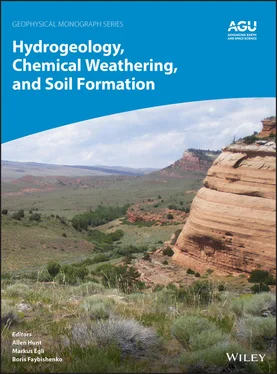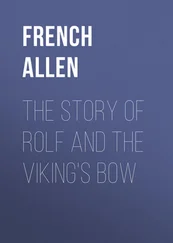Anthropopedology is the study of the human impact on soils. It has a long history. Dan Yaalon and Bruno Yaron (1966) used the term metapedogenesis to cover human‐made soil changes; Ron Amundson and Jenny (1991) considered the place of the human species in the state‐factor theory of ecosystems. But two‐way interactions between soils and the human sphere (anthroposphere) have been the subject of increased research over the last few decades owing to the recognition of soil as an indispensable resource (e.g. Richter & Yaalon, 2011). Topics investigated include coupled human–natural landscapes (Barton et al., 2016) and the evolution of technosols (soils subjected to a strong human influence and containing significant amounts of artefacts, characteristic of the Anthropocene; Leguédois et al., 2016). Research in anthropopedology becomes ever‐more pressing as human security comes to rely increasingly on Earth’s diverse soil resources. As Amundson et al. (2015) point out:
Soil is the living epidermis of the planet. Globally, soil is the medium through which a number of atmospheric gases are biologically cycled and through which waters are filtered and stored as they pass through the global hydrological cycle. Soil is a large and dynamic reservoir of carbon and the physical substrate for most of our food production. Profound changes are on the horizon for these interconnected functions—particularly sparked by changes to climate and food production—that will likely reverberate through society this century.
Big gains have come from viewing the soil as a system. From the early ideas on state factors, inputs and outputs, and transfers and transformation have evolved sophisticated models of soil landscapes and soils as a key component of the Earth system, and in particular of its critical zone. Of course, challenging questions in pedology remain, and it may take fresh approaches to answer them, but a systems approach still offers a powerful method of investigation. Indeed, Henry Lin (2011) demonstrates the value of such an approach in understanding spatial and temporal changes in soil systems and advancing forecasts and plans for changes related to critical societal needs. To do so, he brings together three general principles of soil change and pedogenesis in time and space (especially time):
First is the principle of conservation plus evolution , which provides the reconciliation of fast and slow changes in multiphase soil systems. Incomplete closure and partial irreversibility of many cyclic processes involved in soil functioning produce a range of residual solid products that accumulate over time, meaning that soil profiles record their own history, at least to an extent; this idea was first put forward by Aleksei A. Rode (1947) and later called “soil memory” (Targulian & Sokolova, 1996). Fast and slow changes in complex soil systems thus require an evolutionary and holistic approach to account for their connections and to quantify structural and informational accumulation alongside energy and matter conservation.
Second is the principle of dissipation plus organization , which explains the simultaneous processes of dissipation (that create the soil matrix) and organization (that create soil structure) that occur in the formation and evolution of natural soil systems. The idea is consistent with the theory of dissipative structure and self‐organization: soil entropy changes provide potential indices for the degree of soil weathering (residuals) and soil structural development (fluxes) once appropriate quantification is made. In addition to energy and mass changes, entropy change and its link to a complex system’s orderliness and information need to be quantified to gain a fuller understanding of soil complexity.
Third is the principle of space plus time , which highlights the fundamental differences and intimate links between time and space. Space is reversible (you can return to a location already visited), conservative in the sense that energy and matter cannot be created or destroyed but can be transformed and transferred, and structured in three dimensions; time is irreversible, evolutionary, and nonstructured (always moving in one direction); however, time and space both share the common characteristics of preferentiality (preference for different spatial locations and preference for different stable states through time) and thresholds (abrupt changes) that govern soil functions and soil evolution.
Lin admits that there are many unknowns in the workings of the soil system, but he argues that his three principles offer useful perspectives for modeling and predicting soil change and pedogenesis. They are certainly areas where the systems approach may provide new pedological insights that build upon the foundations laid by Dokuchaev, Jenny, Simonson, and the other giants of the discipline.
I would like to thank Allen G. Hunt for inviting me to write this chapter and two anonymous reviewers for their helpful and encouraging comments. My doctoral thesis dealt with soil‐landscape systems, but my interests have shifted to other areas during my career, mainly to aspects of ecology and geomorphology, so revisiting the old soil literature (including my own!) and updating myself on the latest research has proved to be at once a nostalgic, educational, and rewarding adventure.
1 Aandahl, A. R. (1948). The characterization of slope positions and their influence on the total nitrogen content of a few virgin soils of western Iowa. Soil Science Society of America Proceedings, 13, 449–454.
2 Ahnert, F. (1967). The role of the equilibrium concept in the interpretation of landforms of fluvial erosion and deposition. In P. Macra (Ed.), L’evolution des versants (pp. 23–41). Liège: L’Université de Liège.
3 Amundson, R., & Jenny, H. (1991). The place of humans in the state factor theory of ecosystems and their soils. Soil Science, 151, 99–109.
4 Amundson, R., & Jenny, H. (1997). On a state factor model of ecosystems. BioScience, 47, 536–543.
5 Amundson, R., Berhe, A. A., Hopmans, J. W., Olson, C., Sztein, A. E., & Sparks, D. L. (2015). Soil and human security in the 21st century. Science, 348, 1261071. doi:10.1126/science.1261071
6 Armstrong, A. D. (1980). Soils and slopes in a humid temperate environment: A simulation study. Catena, 7, 327–338.
7 Banwart, S. A., Bernasconi, S. M., Blum, W. E. H., de Souza, D. M., Chabaux, F., Duffy, C., et al. (2017). Soil functions in Earth’s Critical Zone: Key results and conclusions. Advances in Agronomy, 142, 1–27.
8 Barton, C. M., Ullah, I. I. T., Bergin, S. M., Sarjoughian, H. S., Mayer, G. R., Bernabeu‐Auban, J. E., et al. (2016). Experimental socioecology: Integrative science for Anthropocene landscape dynamics. Anthropocene, 13, 34–45.
9 Birkeland, P. W. (1990). Soil–geomorphic research: A selective review. Geomorphology, 3, 207–224.
10 Birkeland, P. W. (1999). Soils and geomorphology, 3rd ed. Oxford: Oxford University Press.
11 Blume, H.‐P. (1968). Die pedogenetische Deutung einer Catena durch die Untersuchung der Bodendynamik. Transactions of the Ninth International Congress of Soil Science, Adelaide, 4, 441–449.
12 Blume, H.‐P., & Schlichting, E. (1965). The relationships between historical and experimental pedology. In E. G. Hallsworth & D. V. Crawford (Eds.), Experimental Pedology (pp. 340–353). London: Butterworths.
13 Bockheim J. G., & Gennadiyev, A. N. (2010). Soil‐factorial models and Earth‐system science: A review. Geoderma 159, 243–251.
14 Brevik, E. C., Calzolari, C., Miller, B. A., Pereira, P., Kabala, C., Baumgarten, A., & Jordán, A. (2016). Soil mapping, classification, and modeling: History and future directions. Geoderma, 264, 256–274.
Читать дальше












